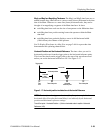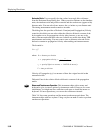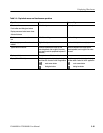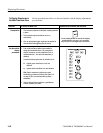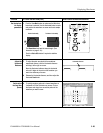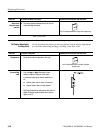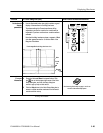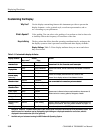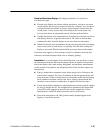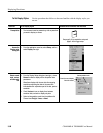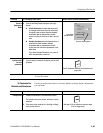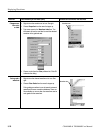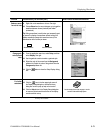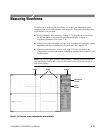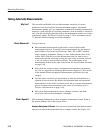
Displaying Waveforms
CSA8000B & TDS8000B User Manual
3-67
Normal and Persistence Displays. Use display persistence to control how
waveform data ages:
H Normal style displays waveforms without persistence: each new waveform
record replaces the previously acquired record for a channel. You can choose
to display normal waveforms as vectors, which displays lines between the
record points, or dots (vectors off) which displays the record points only.
You can also choose an interpolation mode. See Interpolation below.
H Variable Persistence style accumulates the waveform-record points on screen
and displays them for a specific time interval. The oldest waveform data
continuously fades from the display as new waveform records acquire.
H Infinite Persistence style accumulates the data record points until you change
some control (such as scale factor) or explicitly clear the data, causing the
display to be erased. Waveform data builds up as new data records acquire.
Persistence style applies to all waveforms, except for channel waveforms and
reference waveforms displayed with color or intensity grading.
Interpolation. For record lengths of less than 500 points, you can choose to have
the instrument interpolate between the sampled points it acquires. Interpolation
affects the display only; mask testing, histograms, and automatic measurement
results are based on acquired, not interpolated, data. There are three options for
interpolation:
H Sin(x)/x interpolation computes record points using a curve-fit between the
actual values acquired. The curve-fit assumes all the interpolated points fall
along that curve. Sin(x)/x interpolation is particularly useful when acquiring
more rounded waveforms, such as sine waves. S in(x)/x interpolation may
introduce some overshoot or undershoot in signals with fast rise times.
H Linear interpolation computes record points between actual acquired samples
by using a straight-line-fit. The straight-line-fit assumes all the interpolated
points fall in their appropriate point in time on that straight line. Linear
interpolation is useful for many waveforms such as pulse trains.
H None turns interpolation off. Only points actually sampled appear in the
displays of waveform records.



